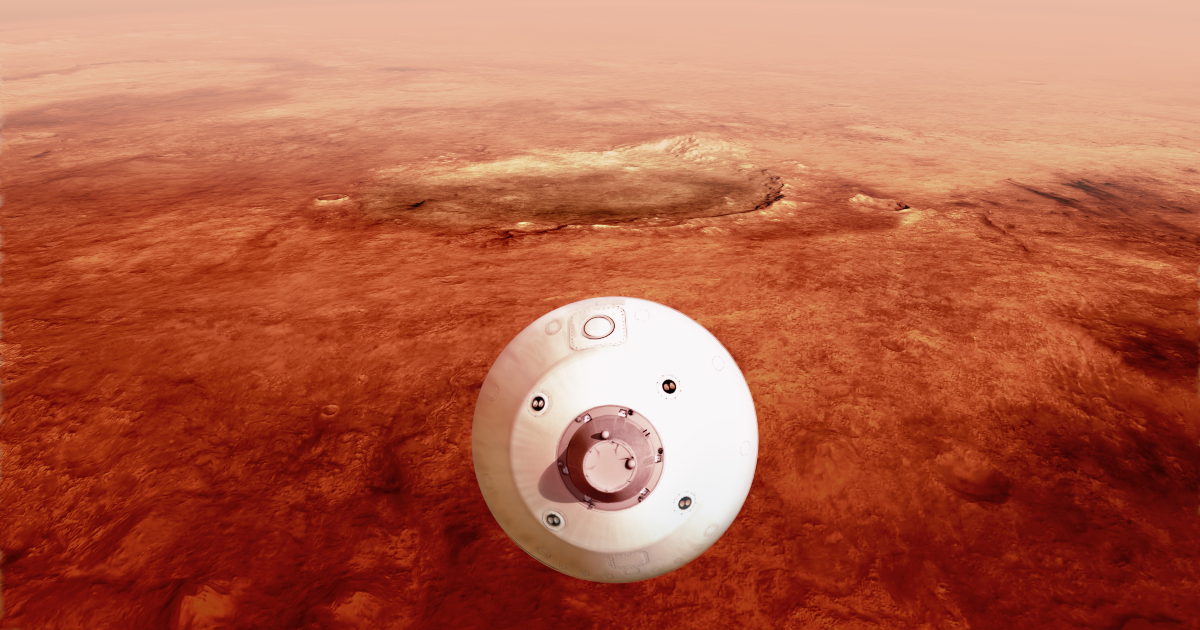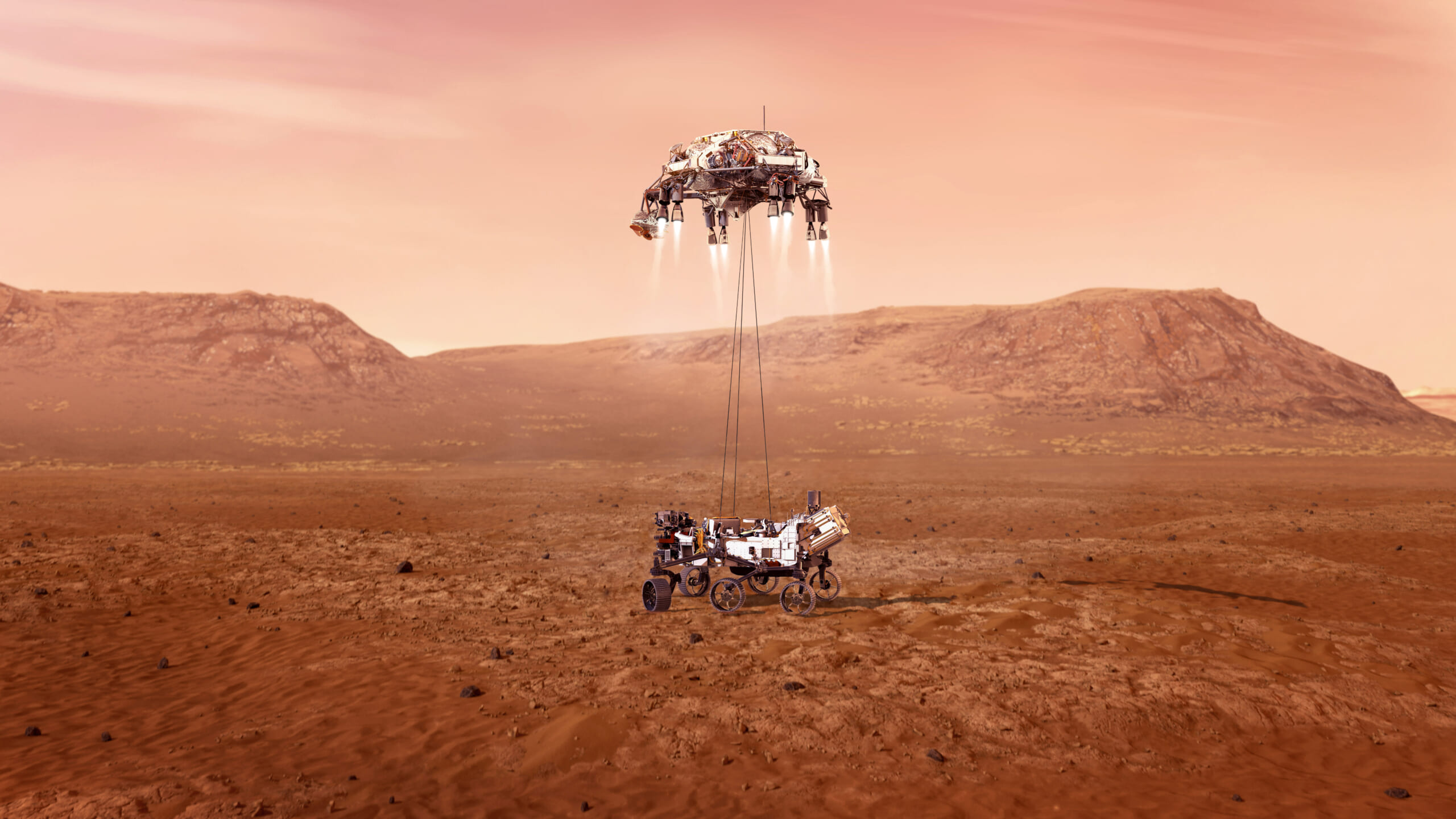Watch NASA Rover Land on Mars in Search of Alien Life
NASA’s Perseverance Rover is in search of extraterrestrial life.

NASA‘s Opportunity rover completed its mission on Mars in 2019. Today, the space agency’s newest rover, Perseverance, landed safely on the Red Planet for a mission of its own. Viewers can watch the feed in progress above or go here to witness events as they unfold inside Mission Control.
BREAKING: NASA's Perseverance rover sends back first image from the surface of Mars after landing on the red planet. https://t.co/IOTdcyTAe9 #CountdownToMars pic.twitter.com/N9eLHVpJG7
— ABC News (@ABC) February 18, 2021
Even after traveling 293 million miles, the car-sized spacecraft had its work cut out for it. First, it had to make an unusually difficult landing. Next, Perseverance begins its mission to find evidence of ancient life.
The Verge has more details on how the landing likely went down (video of the actual landing won’t be available for days):
At around 3:48PM ET, Perseverance will begin its wicked seven-minute descent toward the Martian surface, hitting the planet’s atmosphere at speeds of roughly 12,100 miles per hour before being calmly deposited in a messy jungle of cliffs, massive boulders, and dangerously sandy pits at Mars’ Jezero Crater.
In that fully autonomous landing sequence, the spacecraft carrying Perseverance will endure blazing heat, ditch its protective shell, and deploy a set of parachutes. As it approaches the surface, the spacecraft’s descent stage will fire onboard thrusters to slow itself down to a sedate 2 mph and hover some 66 feet above the surface.
Then comes the “skycrane” technique: the descent stage, still firing its six mini rocket thrusters, will gently lower Perseverance on cables the rest of the way to the surface. Once the rover touches down, it’ll snip its cables, prompting the descent stage to take off, eventually landing far away from Perseverance.
It was the ultimate challenge for a self-driving, self-parking vehicle.

In an interview with The Verge, NASA’s entry, descent, and landing lead mission engineer Al Chen underscored what a gamble this—and really, any mission to such a distant planet—truly is.
“We know that the rest of the mission, the surface mission and everything that comes afterward and the rest of the campaign, is depending on” his team, Chen said. “So we wanna make sure we don’t let anybody down.”
Tomorrow I arrive at Jezero Crater, a dry lakebed on Mars. I’ll chart a path along its ancient shoreline, to see if it’s like similar places on Earth. I’m looking for rocks that tell a story of past microbial life. https://t.co/5RCEWdNc9b #CountdownToMars pic.twitter.com/NsNJjXHPbu
— NASA's Perseverance Mars Rover (@NASAPersevere) February 17, 2021
The potential for letdown was pretty high. Chen illustrated the kind of geographic, physical challenges Perseverance had to overcome to The Verge, saying “We have this big 200-foot cliff wall going right through the middle” of the landing zone in the Jezero Crater, which is thought to mark where there once was a river delta, therefore may still hold evidence of prehistoric life.

Chen said that in addition to the cliff, “There are a bunch of craters around the site that are full of sand… even if we landed there it wouldn’t be safe to drive out of. And there are rocks in a lot of different places that we definitely don’t want to come down on.”
Now that Perseverance has touched down without a hitch, NASA is the third space agency to establish a new presence on Mars in February alone, as spacecraft from the United Arab Emirates and from China landed earlier in the month.
"[@NASAPersevere survives on Mars] because of the team that performs the health and safety assessments everyday and communicates with the rover."@NASAJPL surface mission manager Jessica Samuels takes a student question about what's next for Perseverance: pic.twitter.com/TgOYtwZdKm
— NASA (@NASA) February 18, 2021
Along with seeking some kind of microscopic fossil record indicating whether Mars really once was home to some form of life, Perseverance will test sensors and instruments that could play a crucial role in future, manned missions. It will also release a solar-powered drone called Ingenuity. The lightweight helicopter-like craft will survey terrain too difficult for the Rover to traverse, likely gathering some of the most intriguing views of Mars we’ve seen.
Check out the action here: mars.nasa.gov/mars2020.
